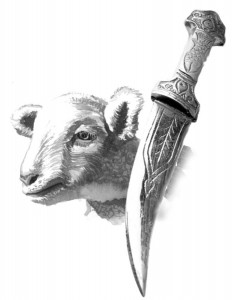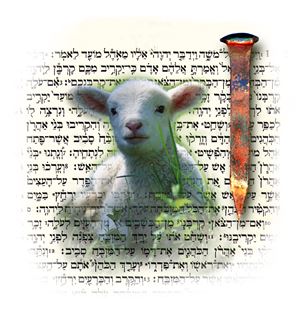The Full Picture of Passover

© Stan Myer
Learn a First-Century Jewish perspective of Passover from Messianic teacher Kevin Williams.

Messianic Foundations
Artwork by Steve Grier © 1997 RBC Ministries. Used by permission.
Within the overall context of Passover, the details for the Christian to experience are few. We know little of a typical four hour celebration meal. Little of the preparatory cleaning that goes into making a house “kosher” for Passover. We know virtually nothing about the elements on the Seder plate or the ceremonial “four cups,” though the traditions go back to the second Temple period and were observed by Jesus and his disciples. We might know that you eat “matzah ball soup” during Passover because leavened products are forbidden by the Law of Moses, but beyond that, our knowledge is slim at best.
There are 28 references to Passover in the New Testament, and scant little information on the Last Supper except as recorded in just a few verses. There is the complete history of the first Passover recorded for us in the book of Exodus, and over 100 references in the Old Testament to the God who “brought you out of Egypt,” all of which allude to the miracles of the Almighty and His unique and awesome lessons revealed in the Passover. But what does the average non-Jew really know about such things?
Colossians 2:17 refers to the sabbaths, festivals, and new moon observances as “things which are a mere shadow of what is to come; but the substance belongs to Christ.” This has often been interpreted as a discouragement from investigating the traditions or observances of these God ordained times and seasons. Personally, I feel this style of interpretation has unfairly robbed believers of much of their biblical heritage and separated them from a legacy that is theirs to claim.1 In Lenski’s The Interpretation of St. Paul’s Epistles to the Colossians, to the Thessalonians, to Timothy, to Titus and to Philemon, he draws a poignant conclusion to Colossians 2:17.
We should not think slightingly of the shadow. It was no less than the Divine promise of all the heavenly realities about to arrive. The shadow proved the actuality and even the nearness of the realities, for only an actual body and one that is not far away casts a shadow.2
If we can accept, for the moment, the concept that the shadow points out something near and perceivable, then the “sabbaths, festivals and new moon observances” Paul references should be able to point out a great deal about the character and will of God. These Jewish observances should be able to give us a fuller vision of who God is.
Category: Biblical Studies, Summer 1999


